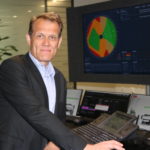ABB sees big potential for automation technology in a huge variety of shipping segments. , Global Sales Manager for Digital Solutions, talks to HANSA about prospects and the relevance of inter-connectivity of systems on board as well as the potential role of B&R, which is planned to be taken over
What is ABB’s USP in the competition for automation technology?
Häkkinen: Competition is very harsh in this sector[ds_preview], and this has meant we have had to differentiate ourselves. Over the last five years, we have put a lot of effort into automation and other digital solutions, and our focus has been on developing a wide portfolio that takes in a variety of interfaces and technologies for different types of vessels and applications. We have looked beyond standard machinery automation. ABB’s greater involvement in air conditioning control has been exemplary, while we have also needed to develop automation solutions to take account of the fact that more vessels are running on LNG.
Is your automation business affected by the acquisition of Austrian company B&R?
Häkkinen: The acquisition was announced on April 4 this year. B&R will close a historic gap within ABB’s automation offering, making ABB the only industrial automation provider offering customers the entire spectrum of technology and software solutions around measurement, control, actuation, robotics, electrification, and digitalization.
As well in the maritime business?
Häkkinen: B&R will become part of ABB’s Industrial Automation division as a new global business unit – Machine & Factory Automation. B&R is particularly strong in machine and factory automation. As we combine the best of both worlds we will see in the integration phase where we can learn from each other.
Which vessel segments are the most important ones for ABB’s automation business?
Häkkinen: Automation is central to systems across a wide range of new ships, ranging from compact vessels such as »Vision of the Fjords« to very big vessels. There are also very special vessels, like the cable layer »NKT Victoria«, where our installed automation is so extensive that I don’t see what could be missing. Basically, we have the technology for any vessel type, but it is worth emphasising that automation is not about stand-alone solutions; it is about interconnectivity, propulsion control, remote control and remote monitoring for maintenance planning. These are the parts of the business where automation is becoming increasingly important.
What do you expect to happen in the next year(s)?
Häkkinen: Over recent years, we have seen the introduction of a number of different automated systems on board. Looking back 15 years, diesel engines did not have much automation, but now there are a significant number of control systems installed. In the period ahead the connectivity and how they interact will need to improve.
Then we are getting closer from automated to autonomous …
Häkkinen: Yes, of course. Looking at developments shoreside, we can see that the internet of things is everywhere and any device is or can be interconnected. Over time, the same thing will happen on board.
What are the biggest challenges in the automation development?
Häkkinen: Again, the biggest challenges in the immediate term lie in interconnection. There has been a lack of standardisation for a long time; we expect there will be more than one standard in the future, which will make things tricky. How will we serve the different interfaces? In addition, it’s clear that more and more power sources are being exploited: batteries and fuel cells will be more widely deployed on ships. Batteries need connection and control, because it is the control which brings the savings. Again, it’s fair to say that the last diesel engine will be built one day, and if we want to talk about truly »intelligent« vessels, they will be electric.
Interview: Michael Meyer


















